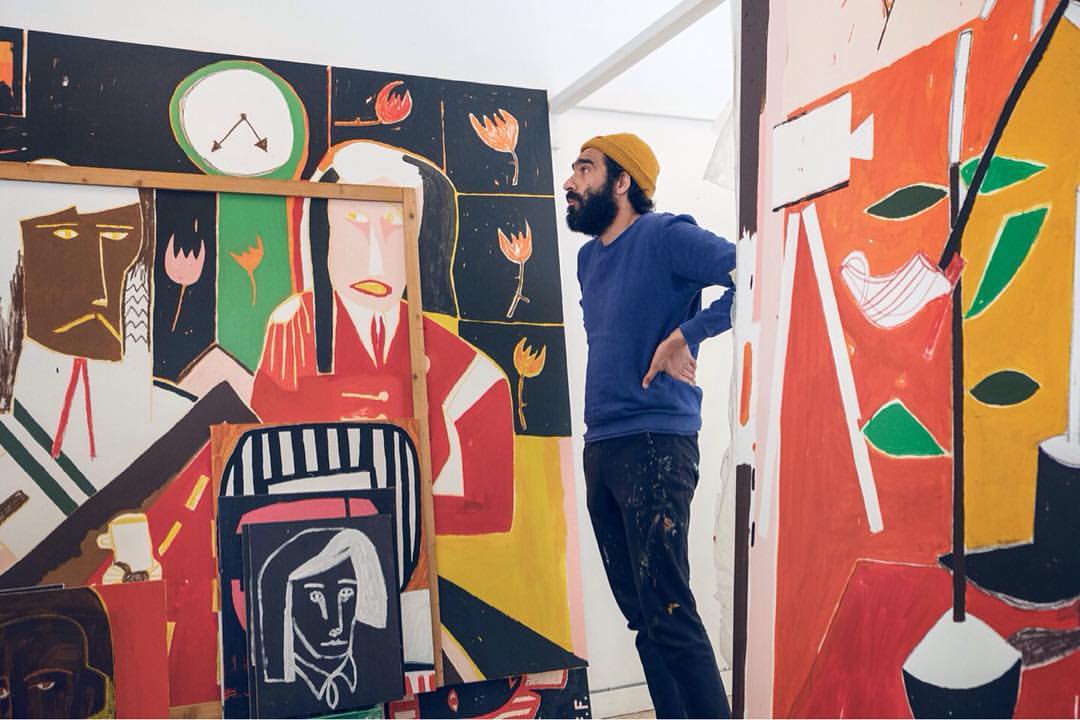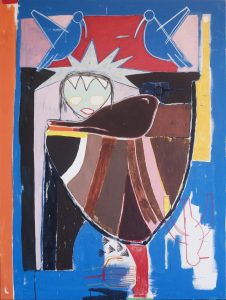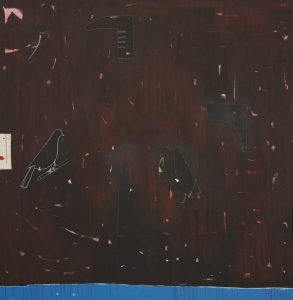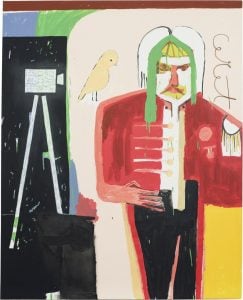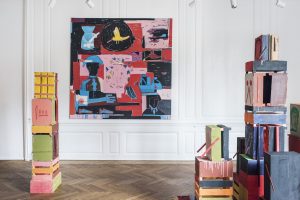Farshad Farzankia: When Tehran meets Copenhagen
By Shira Wolfe
Farshad Farzankia was born in Tehran, Iran and ended up in Copenhagen after he completed his bachelor in Visual Communication there. Painting came very naturally to him from an early age, and he soon started treating it like a full-time job. The artist always wanted to make movies and cites Abbas Kiarostami, the famous Iranian film director, as a great influence and hero – someone who changed his view of everyday life and therefore changed his life forever. Then there’s Rainer Werner Fassbinder of the New German Cinema movement, another cinematic love of Farzankia’s.
Farzankia is definitely at home in his Scandinavian surroundings – some of his biggest artistic heroes are the Danish artist Asger Jorn (1914-1973), who was a founding member of the COBRA movement and Situationist International, Swedish poet Gunnar Ekelöf (1907-1968), and Jens Ferdinand Willumsen (1863-1958), the Danish artist associated with Symbolism and Expressionism. Another artist hero of his is Jean-Michel Basquiat, whose Neo-Expressionist influences can clearly be traced in Farzankia’s large, colourful, iconic paintings. A Danish artist who is still alive whose work Farzankia admires is Bjørn Nørgaard. “I like Madness you know. These guys are mad,” Farzankia explains. He speaks of all these artists, dead and alive, as friends and family. That is how deeply his connection to them manifests itself.
Farzankia’s art is awash with symbols and references from the ‘80s up to today and explores themes of migration and power relations – shoes and birds often return in his works, symbolising migration and a search for freedom. He often reflects on his personal background and heritage – for example, we can find references to iconic posters from Farzankia’s Tehran childhood days. Yet he asserts that he does not even really make the art for himself, or anyone else. It is more a process of tapping into something which has to get expressed somehow.
Most of his paintings are filled with bright colours. In ‘Freedom Exists’, he portrays a naïve figure reminiscent of Basquiat surrounded by blue and white birds, while the figure himself appears to be stuck in a cage of sorts with one brown bird – is he trying to get to the key to open the cage, or is he himself a part of the problem, keeping them locked up?
Then in ‘A Moment of Innocence’, he explores uncharacteristically darker colours, shades of brown, black and orange depict birds, boots and tulips – here, Farzankia could be reflecting on the hard journeys of migrants and refugees searching for their own moments of innocence in the face of the hardships they have had to face. The symbols float around, almost like stars in a deep, dark sky.
‘Establishing Shot’ captures Farzankia’s love of cinema. The camera films a man in a strange costume, a red military-style jacket. A bird sits on his shoulder, observing his stance. And so Farzankia mixes influences and meanings, creating arresting paintings that get so close to you that they become like the friends and family that he himself speaks of when referring to his favourite artists.
In February/March 2018, Farzankia had his first solo exhibition at Andersen’s Amaliegade gallery in Copenhagen. The exhibit included paintings and sculptures.
